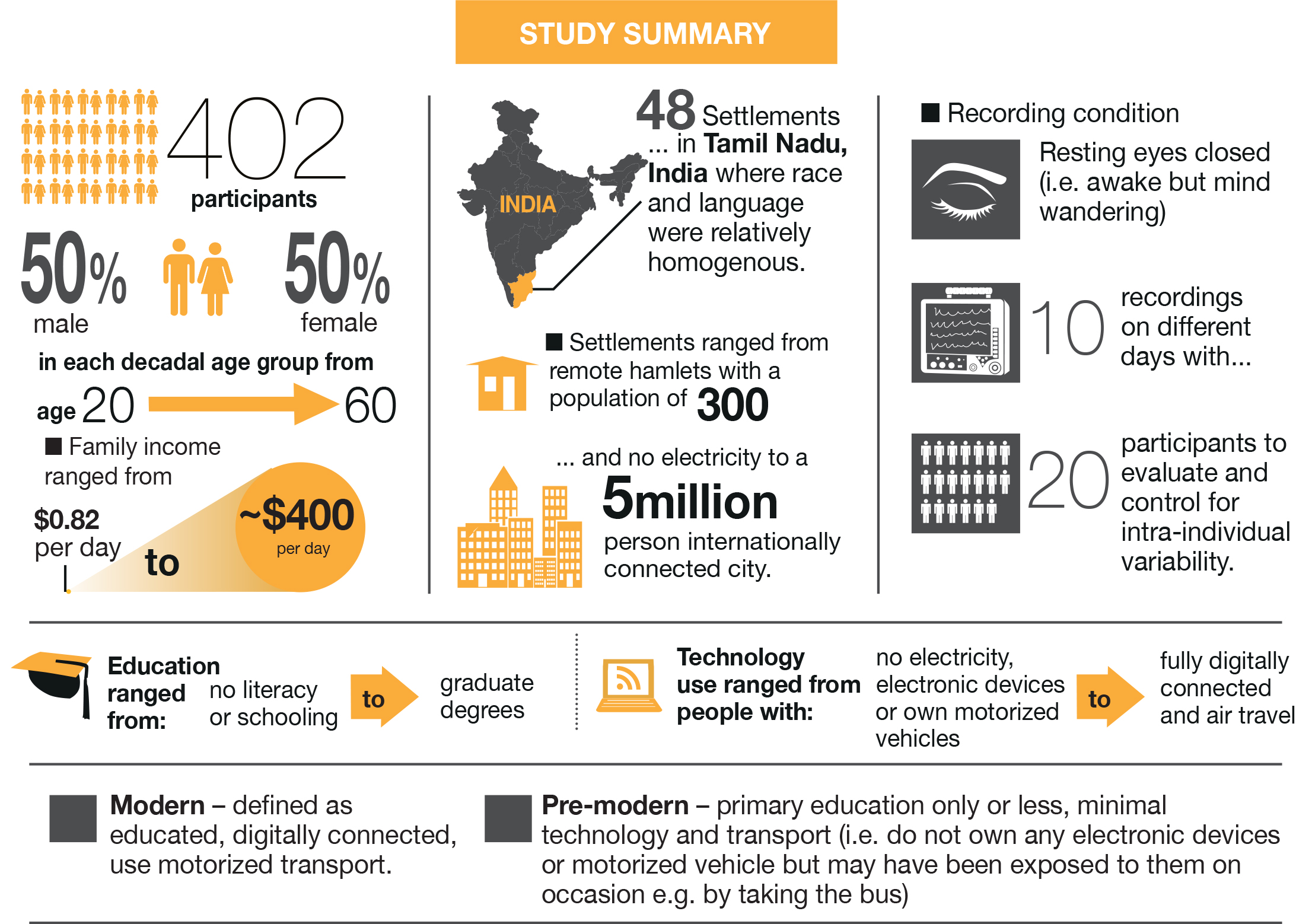

Tamil Nadu, India – Sapien Labs’ Human Brain Diversity Project is establishing a platform that enableslarge scale collaborative study of EEG activity across diverse populations around the world in order tounderstand the spectrum of dynamical properties of the human brain. By nature, the brain is an experience-dependent organ that is designed to constantly reconfigure itself based on sensory input it receives, integrating every experience into its fabric.
With diverse languages, cultures, social structures, educations, occupations, physical environments, incomes and access and use of technology our experiences vary widely.
Through the Human Brain Diversity Project, we seek to tease out some of these differences by changing the way the human brain is studied. We are working against the trends of small sample sizes, lack of standardization across data, and location of studies, where 75% occur in Europe or the United States.
Our newly released study focuses on the profound impact that modernization – the advent of large urban agglomeration and technology – has had on the human brain. Based in the State of Tamil Nadu, India, the study measured EEG activity in 402 people across 48 settlements in India ranging from small, remote settlements with no access to electricity, telecommunication or motorized transport to large urban hubs. A few key findings include:
- There is an exceptionally strong link between context and brain dynamics: fundamental features of brain activity scaled in lock step with access to elements of modernization.
- Modernization has made our brains more complex, with geofootprint or extent of travel being more tightly coupled to this aspect than any other factor measured.
- The strength of the alpha oscillation, a feature related to attention, was closely related to fuel consumption, a proxy for the speed at which we experience the world.
- Some features of the EEG varied as much as 1000-fold across the sample population suggesting that there is no meaningful dynamical average
- An income threshold in the range of $30-$50/day was required to reach modern dynamical parity
The original papers are below and available on BioRxiv:
Complexity of EEG reflects Socioeconomic Context and Geofootprint
Modernization, Wealth and the Emergence of Strong Alpha Oscillations in the EEG
Dynamical Features of Human EEG Scale Systematically with Life Context

View video on recruitment of participants
These findings support the premise that there is no average brain – our brains are as diverse as we are, and depend profoundly on the contexts we live in. The implications are wide reaching, from how we approach development to learning and how we understand ourselves individually and collectively.
The entire dataset is now over 1000 EEG recordings across about 500 people during one or more of five conditions (eyes open, eyes closed, passive viewing of pictures, rapid recall task, working memory and pattern recognition), and continues to grow. Our partnership with Argentina’s Universidad Nacional de San Martin (UNSAM) will expand the dataset over the next year to include diverse populations in South America.
The dataset will be freely available and searchable through Sapien Labs platform when it launches. Before that date, interested researchers can send data requests to us at data@sapienlabs.org. As the Human Brain Diversity database expands we look forward to working with additional global collaborative partners.














